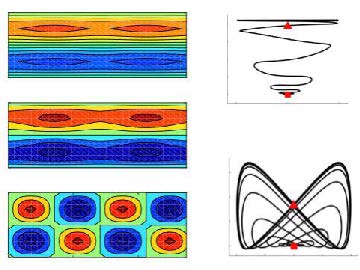| Fri July 3rd 2015 14:00 – 15:00 ZH286 | Seminar | Can frequencies in thermosolutal convection be predicted from mean flows? Laurette S. Tuckerman |
Details:The von Karman vortex street is one of the most striking visual images in fluid dynamics. Immersed in a uniform flow of sufficient strength, a circular cylinder periodically sheds propagating vortices of alternating sign on either side of the "street". Although the von Karman vortex street can be simulated numerically with great accuracy, predicting its properties from general theoretical principles has proved elusive. It has been shown that the vortexshedding frequency can be obtained by carrying out a linear stability analysis about the temporal mean, but there is no understanding of why the correct answer emerges from such an unorthodox procedure. We have carried out a similar analysis of thermosolutal convection, which is driven by opposing thermal and solutal gradients. In a spatially periodic domain, branches of traveling waves and standing waves are created simultaneously by a Hopf bifurcation. We find that linearization about the mean fields of the traveling waves yields an eigenvalue whose real part is almost zero and whose imaginary part corresponds very closely to the nonlinear frequency, consistent with the cylinder wake. In marked contrast, linearization about the mean field of the standing waves yields neither zero growth nor the nonlinear frequency. It is shown that this difference can be attributed to the fact that the temporal power spectrum for the traveling waves is peaked, while that of the standing waves is broad. We give a general demonstration that the frequency of any quasi-monochromatic oscillation can be predicted from its temporal mean. | ||